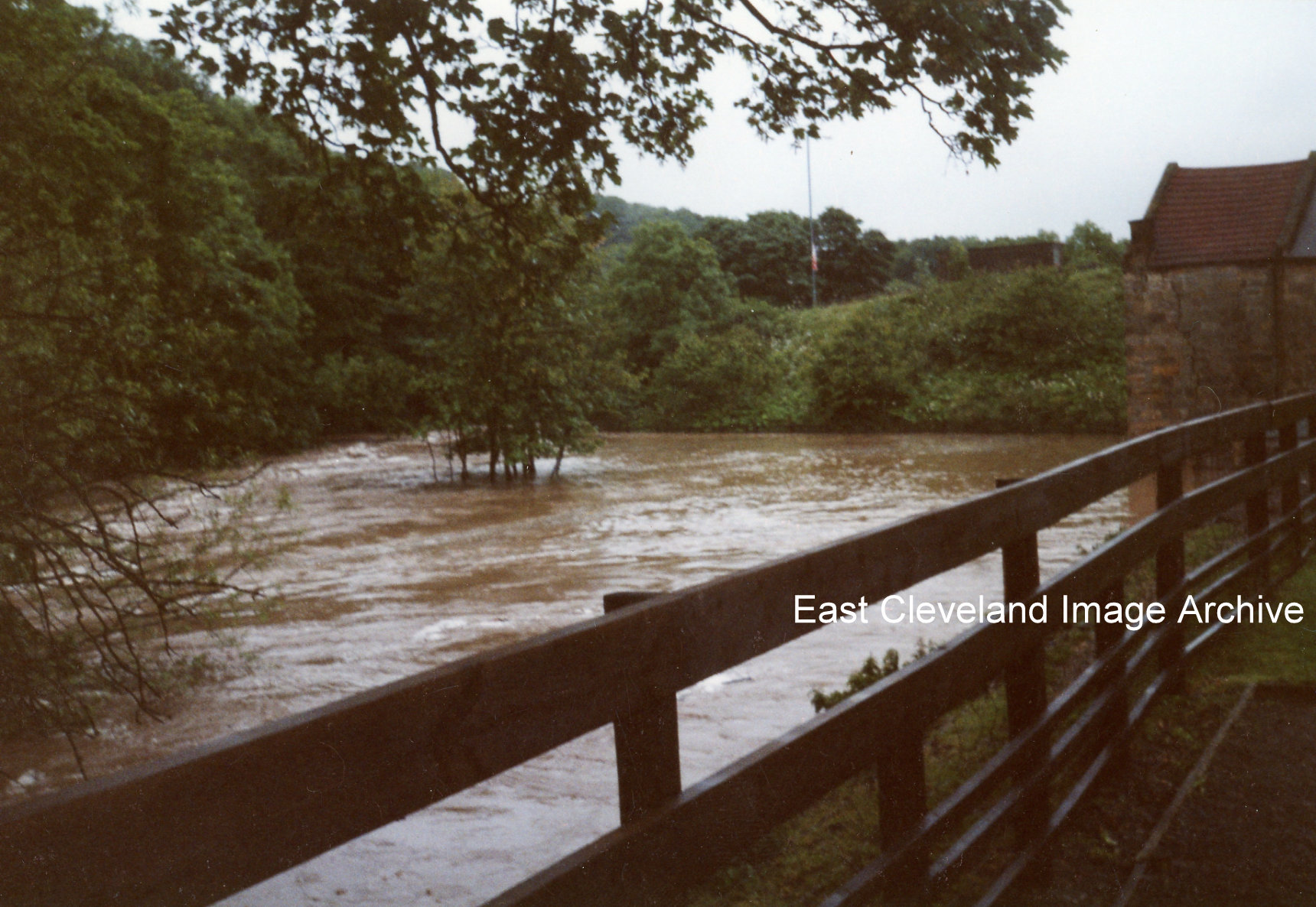
The logs jammed against the old bridge created a dam and the garden of Kilton Mill filled with water.
Image and commentary courtesy of Kathleen Hicks.
|
|
||
 The logs jammed against the old bridge created a dam and the garden of Kilton Mill filled with water. Image and commentary courtesy of Kathleen Hicks. 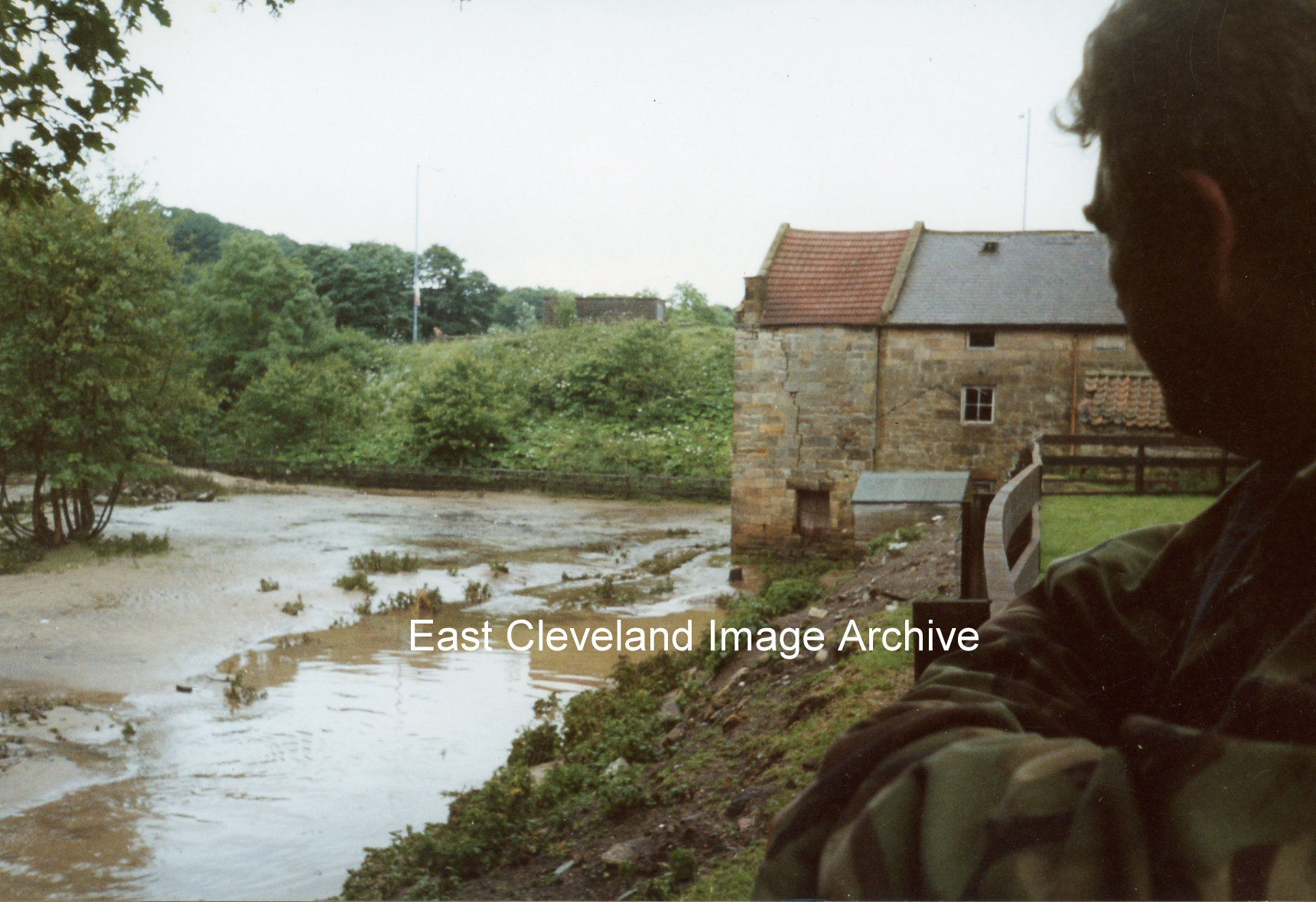 This photograph was taken less than five minutes after the log jam at the bridge gave way. John Hicks views the waterlogged grounds of Kilton Mill. Image courtesy of Kathleen Hicks. 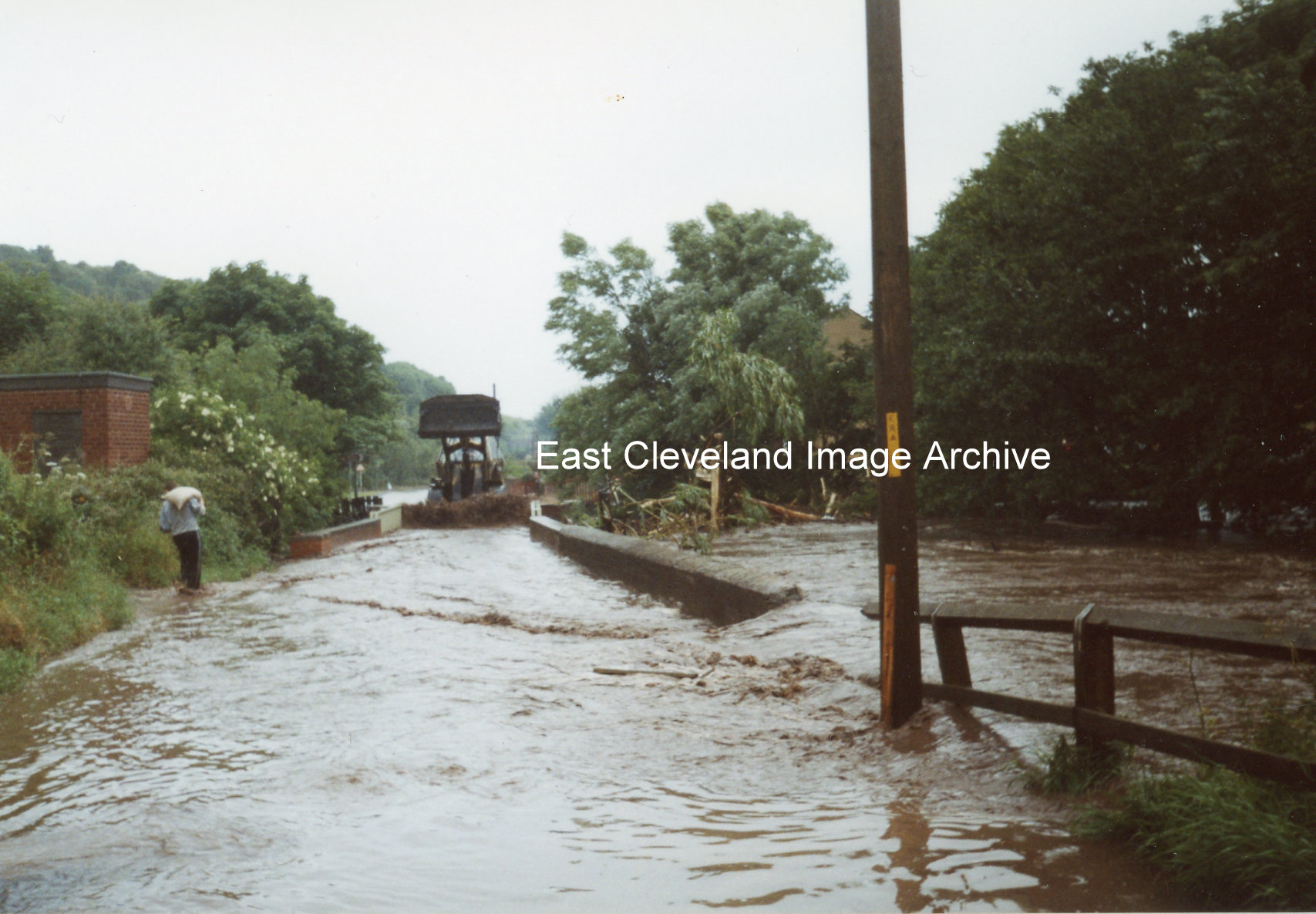 The surge of water flooded over the road. Geoff Robinson used his digger to make a barrier to try and prevent the water from flooding Overman’s Cottages. Then he rescued people in the village from their bedroom windows, in the digger’s bucket. This is the last photograph taken before the water surged, literally in minutes through Skinningrove, leaving devastation in the wake. Image and information courtesy of Kathleen Hicks. 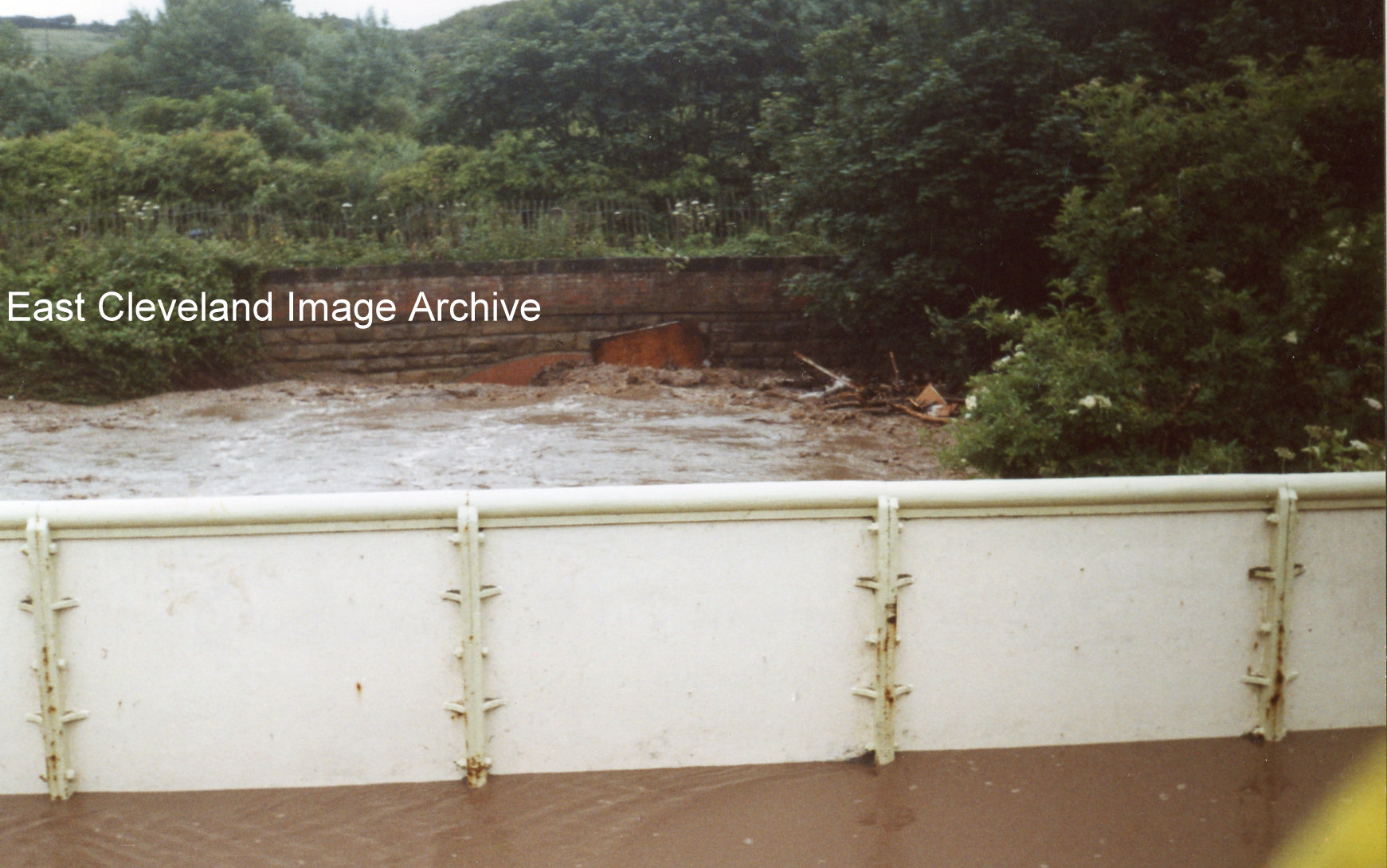 The roof of the shed from Alan Treloar’s garden was jammed against the old bridge. This bridge can be seen from the area of grass near to Kaskane on the Skinningrove Road. Image and detail courtesy of Kathleen Hicks. 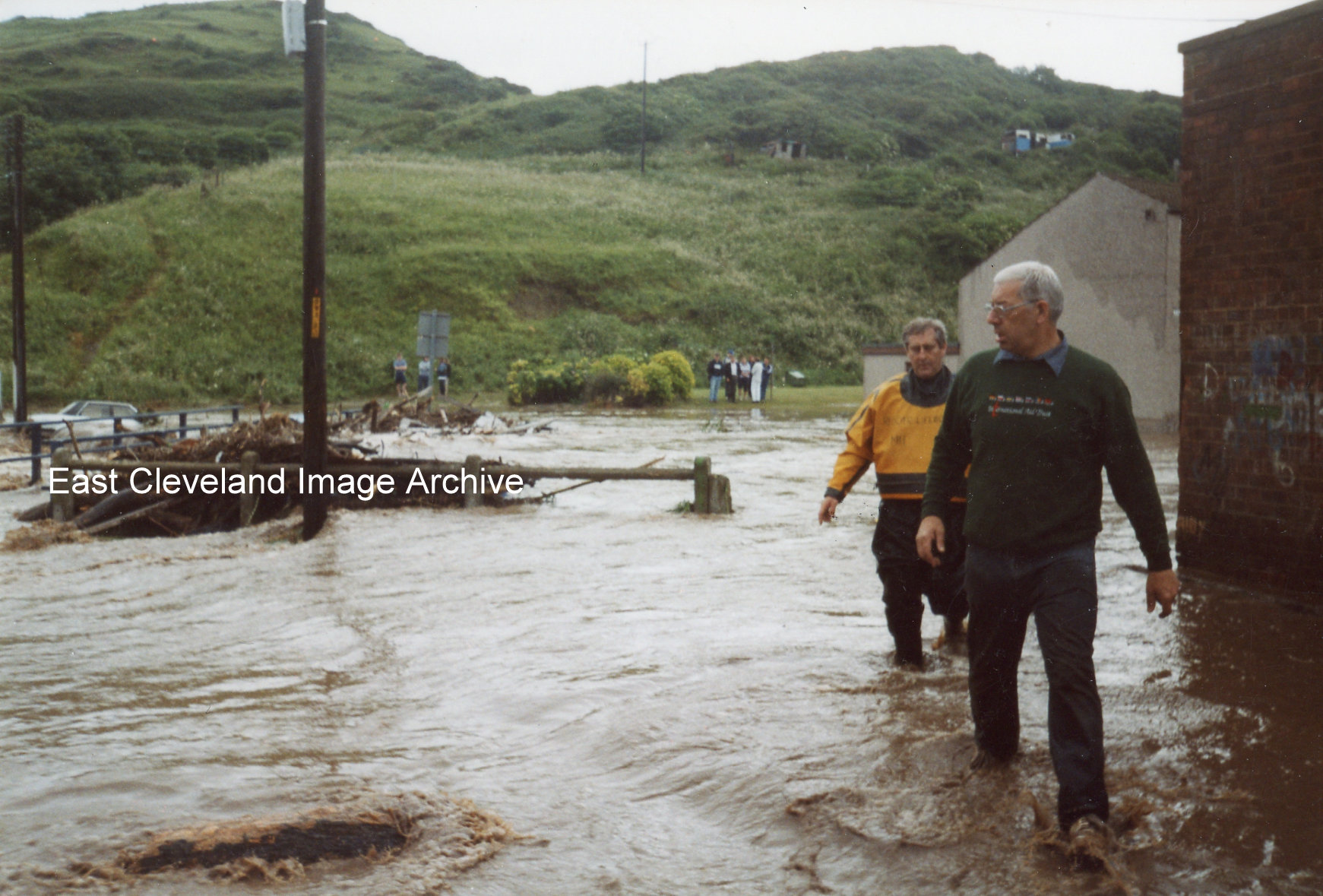 The torrent of water swept down into the village. More tree branches built up against this bridge and the beck burst over its banks. Alan Whitehead (green jumper in right foreground) was among several local residents who sprang to assist the beleaguered resident in Skinningrove. Image and information courtesy of Kathleen Hicks. 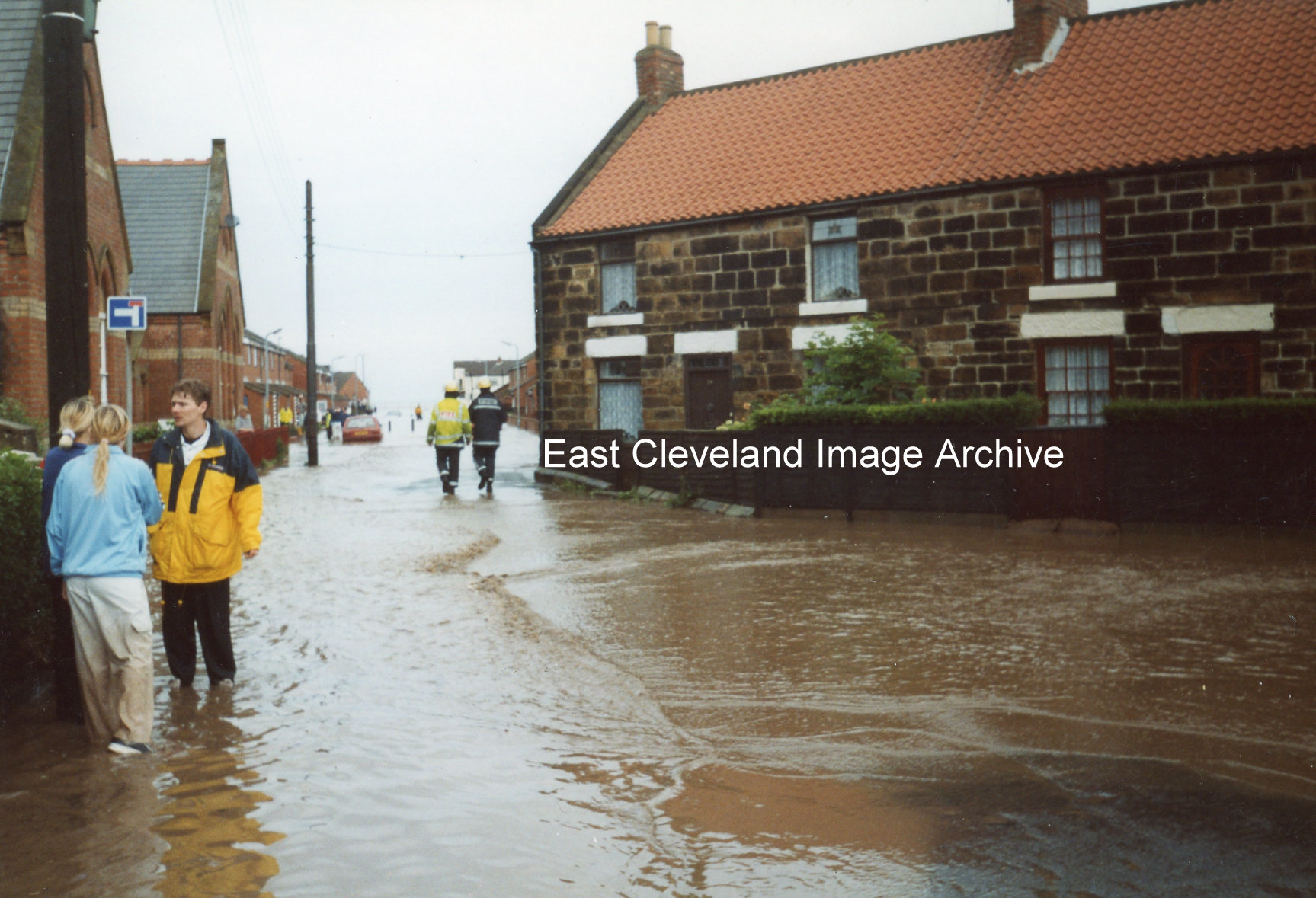 The water flooded through The Square and down the High Street. Image courtesy of Kathleen Hicks. 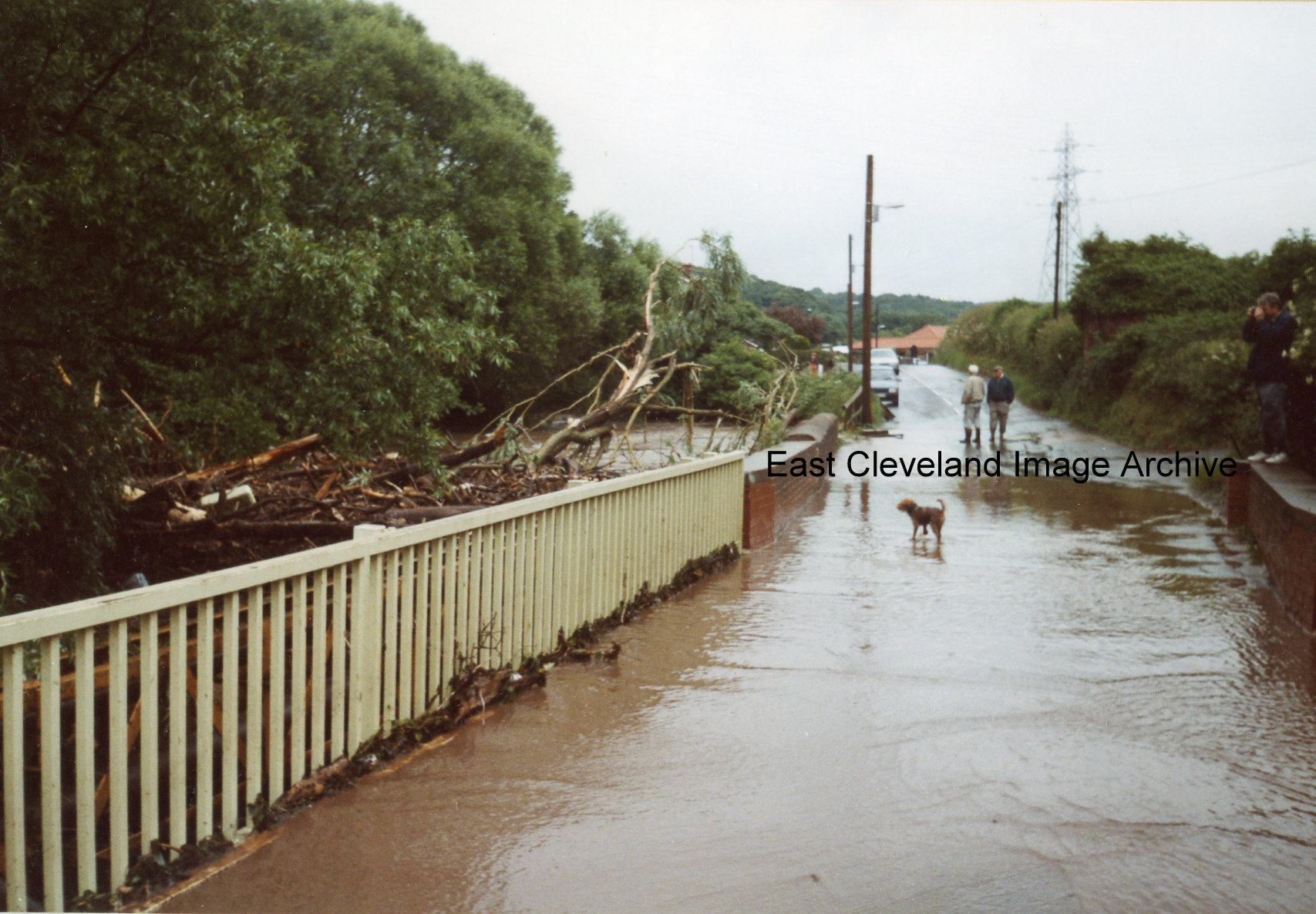 Back along the road towards Kilton Mill, although the surge of water has gone through the beck is still very high and branches are heaped up against the bridge. A final thanks to Kathleen Hicks for submitting this sequence of images. If anybody has any more of the same event please contact us. Image and information courtesy of Kathleen Hicks. 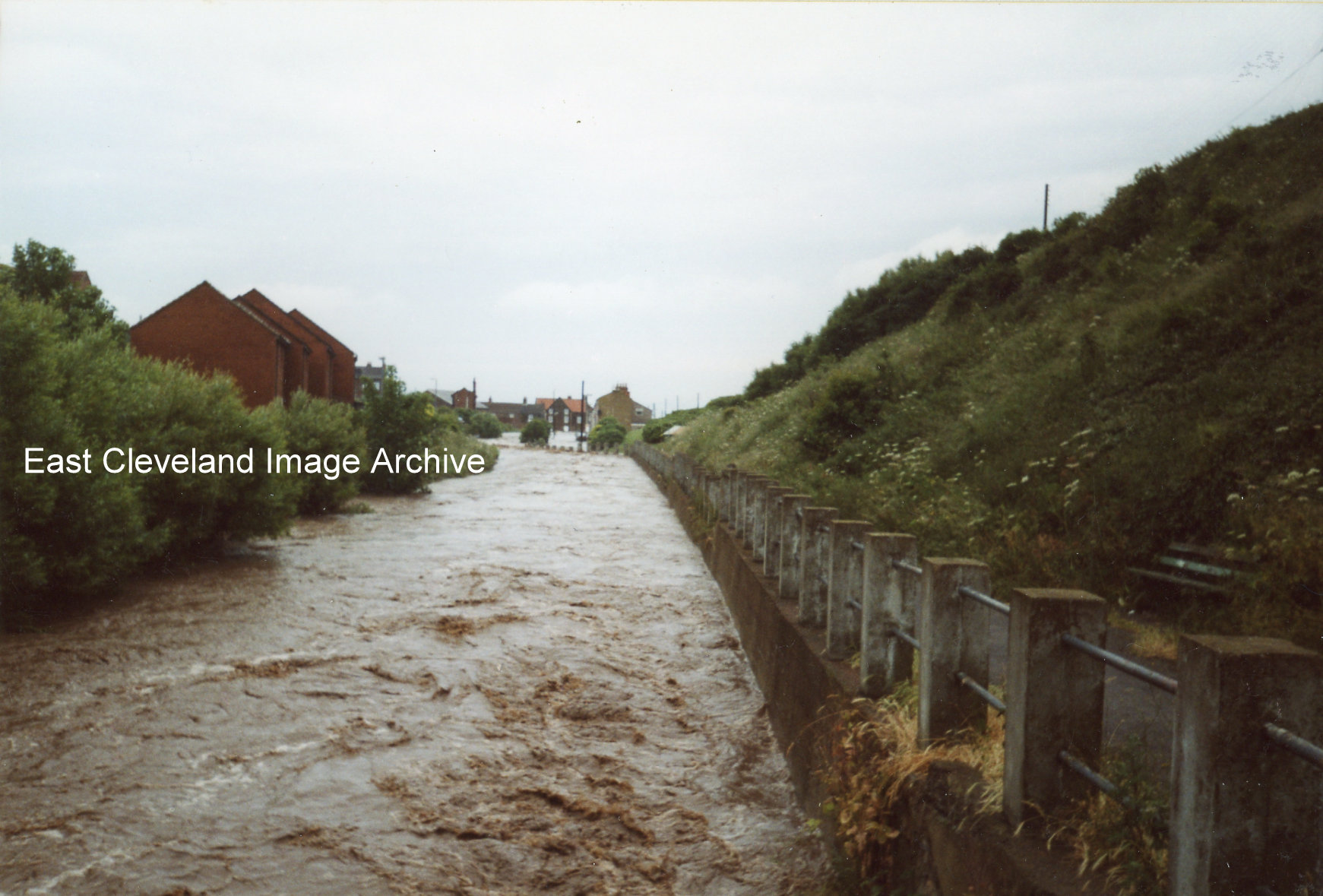 The water rushed down the beck, and swept straight on at the end of Zetland Row. Image courtesy of Kathleen Hicks. 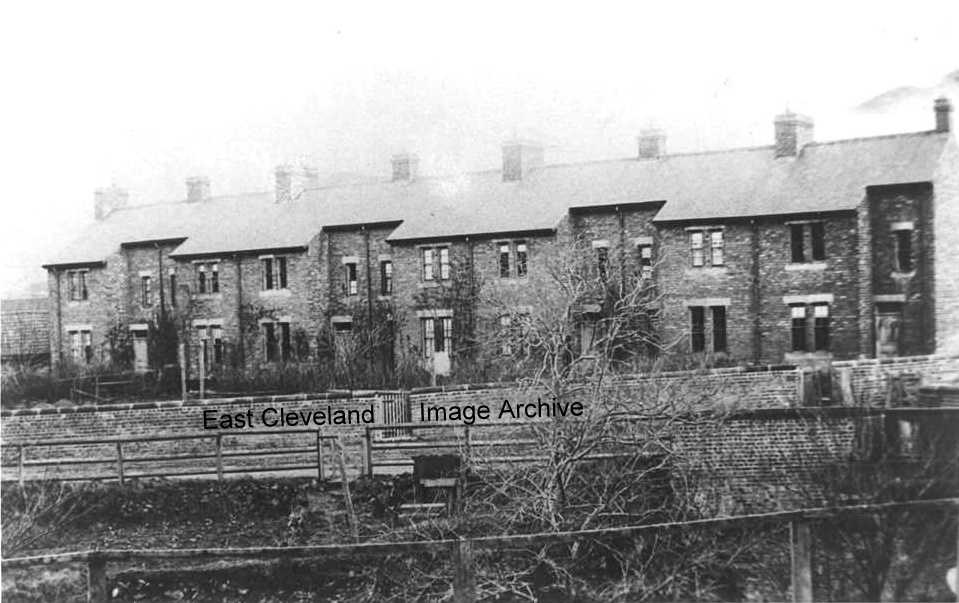 The name tells us what they were; the houses where the Overmen in the mine, (just behind the row of houses) lived. An Overman was literally a person who was in charge of a group of men (like a foreman). The local name for these houses was ‘hoss muck terrace’. This was because all the manure brought out of the mine was piled across the road from these houses, the aroma on a warm summer day drifted for quite a way! Joan Webster tells us: ”My uncle Bill (Bill Peirson) was a electrician at the mine and he lived in the end cottage of Overman’s cottages.” This images dates from the period before the southern end two cottages were removed to make way for the wooden flyover which carried ore from the mine to the works at Carlin How, the terrace was originally called Bowbridge Terrace. Image courtesy of the Pem Holliday Collection and many thanks to Joan Webster for the update; additional information courtesy of Pem Holliday. 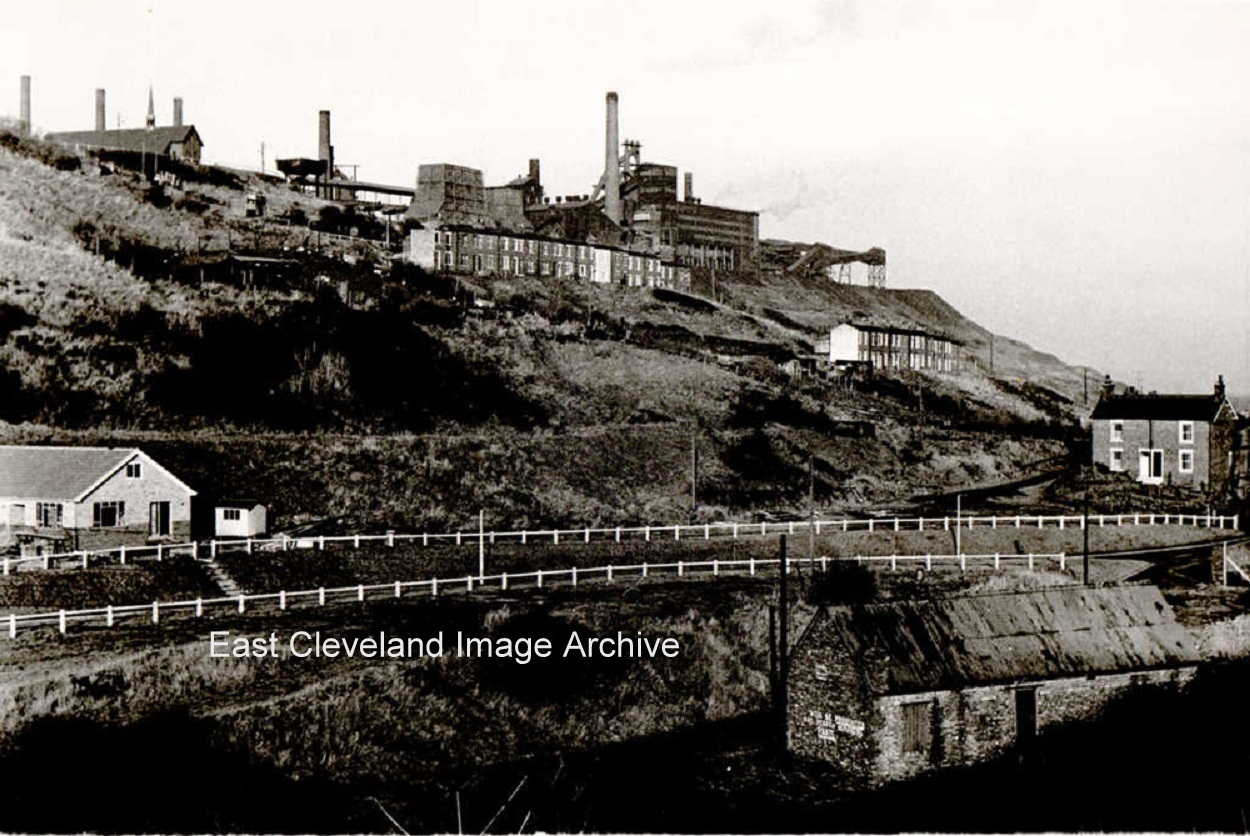 As the road leads us into Skinningrove we can see on the right hand side the Station Master’s house, the two rows of houses are Primrose Hill and on the skyline with the works is St. Helen’s Church. This view after the majority of the gas works had been demolished, still shows the building later known as ‘Brookside Motors’ featuring in a more recent post on the Archive. Image courtesy of Eric Johnson and others. |
||
Recent Comments